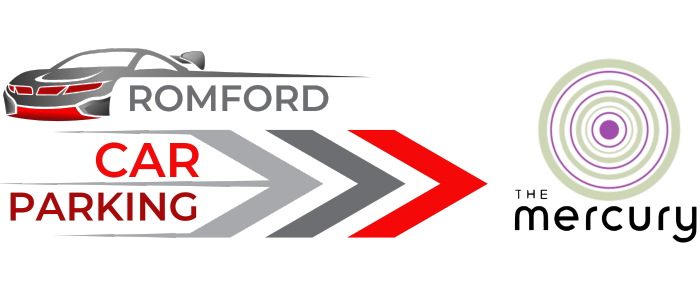Car Park Signs Explained: What to Watch for Before You Park
Knowing what car park signs mean can help you park smarter, save money, and avoid frustration. At Car Parking Romford, understanding car park signage should be straightforward, whether you are navigating a public or private car park. From reading car parking symbols to spotting pay and display zones, clear signs make every parking trip easier. Let’s start with the basics and work our way through the essential things every driver should know.
What Are the Most Common Car Park Signs Drivers Should Know?
The most common car park signs include entry instructions, fee details, disabled bay markings, and car park notice signs that show opening hours or restrictions. These are often found in all-day car parks, star-rated car parks, or even a car park bar, where signage varies. Look out for symbols that show whether you need a ticket or if bays are reserved. Once you can spot the basics, you are less likely to park incorrectly. That leads nicely to another type of sign that drivers often overlook.
Do Warning Signs Show Clear Parking Restrictions or Penalties?
Yes, warning signs highlight restrictions such as no return times, clamping warnings, or fine amounts, often placed where parking is strictly controlled. These signs are especially common in communal car parks, exchange car parks, and the main car park areas of shopping centres. Missing these signs is one of the easiest ways to incur a fine, so spotting them early can save you a lot of stress. Still, even with signs in place, mistakes can happen if the information is not clear enough.
Can Confusing Signs Lead to Parking Fines or Mistakes?
Yes, unclear or poorly placed signs can result in drivers misunderstanding the rules and incurring fines. This is common in newer or busy spaces, such as the Black Down car park or In2In2 car park, where signage may overlap or contradict itself. Always look for an updated car park sign and check if multiple boards display different times or rules. Once you spot a clear pattern, it’s easier to identify which zones are paid or free.
How Do You Spot Signs for Pay and Display Zones?
Pay and display signs typically display payment hours, rates, and instructions in a white or blue format, usually located next to the ticket machine or near entry points. These car parking signs will also mention if a card, cash, or app payment is required. In a new car park or central car parking zone, you might find these near the car park’s five or A sections. When you understand the layout, spotting disability access or restricted spaces gets much easier.
Are Blue Badge and Accessible Parking Signs Easy to Recognise?
Yes, accessible parking signs are easily identified by the blue wheelchair symbol, which is often marked both on signs and on the ground. These spaces are designated and are usually closer to building entrances or lift access areas in any open car park. Always check time limits or badge display requirements to avoid misuse. While these are generally well-marked, the same attention is needed when reading signs on private property.
What Should You Check on Private Car Park Signage?
Private car park signage should include the name of the site manager, the rules, payment details, and any applicable penalties. Look for a car park signage board that clearly shows the terms and includes contact information. In areas such as the car park, lake, or open car parking zones, signs may be smaller or mounted at a low level. When private rules differ, colour and placement become even more important to take note of.
Do Sign Colours Help You Understand Parking Rules Quickly?
Yes, the colours used on car park signs help drivers quickly understand what action is required. For example, red often signals warnings, blue indicates information or disabled bays, and white shows general rules. This colour coding is common across MCP car park areas, good-to-go car parks, and even car parking for events or lakefronts. Once your eyes adjust to these colour cues, other sign factors come into play.
Can Sign Placement Affect Whether Drivers Notice the Rules?
Yes, poor sign placement can lead to drivers missing key details, especially in busy or shared parking spaces. Whether you are entering a main car park, navigating a camping car park, or looking for a spot in a car park party reviews zone, signs should be visible at eye level. Signs hidden by foliage, facing the wrong way, or placed after entry can easily confuse. In work zones or special access areas, visibility is even more crucial.
Are Temporary Signs in Construction Zones Legally Enforced?
Yes, temporary car park signs in construction or roadwork zones are legally enforceable if properly displayed. These may appear suddenly in areas such as central car parks during upgrades or in a public car park where access changes frequently. Whether you are visiting the area for work or using services like Romford valeting, it’s important to stay alert to these temporary notices. They usually follow the same colour guidelines and show who is responsible for enforcement. Once these signs are in place, ignoring them could result in unwanted penalties.
Why Reading Car Park Signs Carefully Saves Time, Money, and Trouble
Reading every car park sign carefully ensures you follow the rules, find the best car park for your needs, and avoid unexpected fines. Whether you’re in a public car park, an open-air car park, or trying to purchase car parking access ahead of time, proper signage helps you plan and park more efficiently. You can learn more about maximising your parking experience by understanding common parking signs. At Car Parking Romford, we encourage all drivers to pause for a few seconds to check the signs because a little reading can go a long way.


Leave a Reply